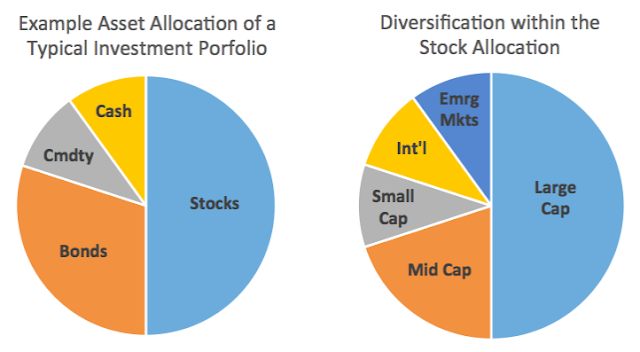For taxable accounts, investors must pay taxes on their investment income in the year it was received. Taxable accounts include individual and joint investment accounts, bank accounts and money market mutual funds.
Tax Deferred Investment Accounts
On the other hand, tax-deferred accounts shelter investments from taxes as long as they remain in the account. Any kind of retirement account - 401(k), 403(b), 457, 529, Health Savings Account, IRA or Roth IRA - is a tax-deferred account. If you are self employed, you might consider a SEP IRA, Solo 401(k) or SIMPLE IRA. I will explain about these in more details later in “Different investment vehicles”.
Generally there are three types of tax deferred investments available
1. Employer-sponsored plans
One place to start investing for your retirement is an employer-sponsored plan such as a 401(k), 403(b) or 457. They typically allow both pre-tax contributions and tax-deferred compounding, and many employers offer a matching contribution.
2. Individual Retirement Accounts (IRAs) – Traditional and Roth
Traditional IRAs may allow you to contribute on a pre-tax basis, depending on your income level and some other factors. With a Roth IRA, you can’t make pre-tax contributions, but earnings could potentially be tax-free if certain conditions are met.
3. Annuities
These are contracts between you and life insurance companies that provide death benefits and may also include other guarantees. These benefits may help protect your beneficiaries if you die before the annuity’s proceeds have been distributed. Annuities do have limitations, and guarantees are subject to the claims-paying ability of the issuing insurance company.
Municipal Bonds
Usually municipal bonds are considered tax exempt investment as the interest on municipal bond is exempt from federal income tax and may also be exempt from state and local taxes if you reside in the state where the bond is issued but taxation on municipal bonds has some complications associated with it which I will cover in more details while explaining about the different investment vehicles.
In a taxable account, taxes are assessed each year on realized gains, but the maximum tax rate is 28%. In a deductible IRA, capital gains are tax deferred until withdrawal in retirement, but they are subject to the ordinary income tax rate that tops out at 39.6%. Power of tax deferred accounts must not be under estimated. The following diagrams can show how it can be a really powerful way maximizing your wealth in long term:
Both types of accounts have their advantages and disadvantages. As a general rule of thumb, tax-efficient investments should be made in the taxable account, and investments that are not tax efficient should be made in a tax-deferred or tax-exempt account.

















